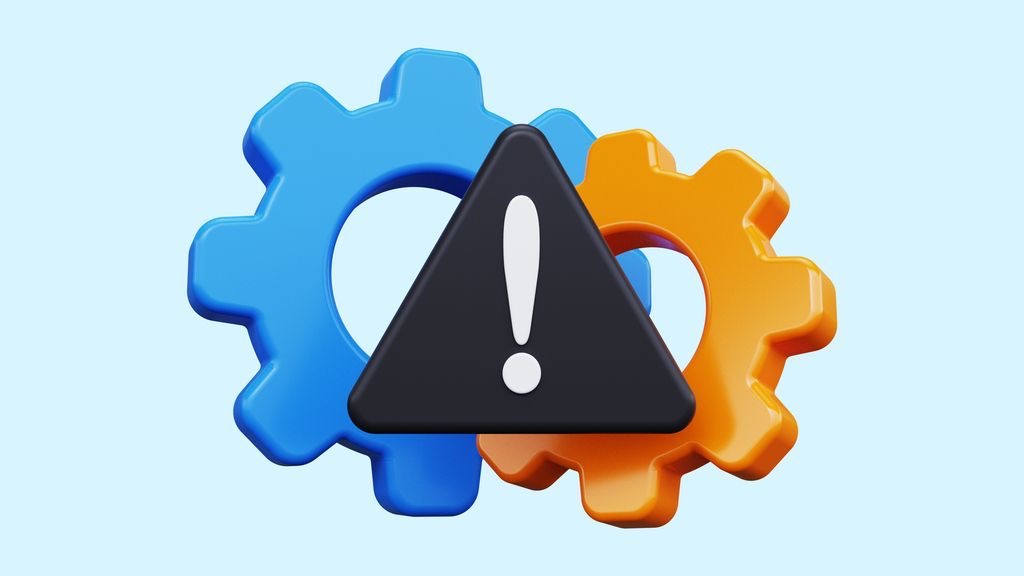In today’s fast-paced business environment, effective communication about schedule changes is no longer optional—it’s essential. Change implementation alerts within notification systems serve as the critical backbone for enterprise scheduling operations, ensuring that all stakeholders remain informed about modifications to work schedules, shift assignments, and operational timelines. These specialized alerts transform how organizations manage scheduling adjustments, providing real-time updates that reduce confusion, minimize disruptions, and maintain operational continuity. For businesses utilizing enterprise-level scheduling systems, especially those with complex workforce deployments across multiple locations or departments, a robust change alert system can mean the difference between smooth transitions and costly miscommunications.
Organizations implementing sophisticated scheduling solutions need notification systems that can reliably deliver timely information about changes while integrating seamlessly with existing enterprise architecture. These systems must balance the technical requirements of modern IT infrastructure with the practical human need for clear, actionable information. As scheduling becomes increasingly dynamic in response to business demands, labor regulations, and employee preferences, the technology supporting change implementation alerts has evolved to become more intelligent, personalized, and contextually aware. Successful implementation requires careful consideration of user experience, technical integration points, compliance requirements, and organizational communication policies to create a notification ecosystem that supports both operational efficiency and employee engagement.
Understanding Change Implementation Alerts in Scheduling Systems
Change implementation alerts are specialized notifications designed to communicate schedule modifications efficiently throughout an organization. These alerts form a critical component of notification system design, acting as the primary channel for distributing information about schedule changes, shift modifications, staffing adjustments, and other scheduling-related updates. Unlike general communications, change implementation alerts are specifically constructed to deliver time-sensitive information that requires acknowledgment or action. The sophistication of these systems varies widely, from basic email notifications to advanced multi-channel platforms with intelligent routing capabilities and confirmation tracking.
What makes these notifications particularly valuable in enterprise environments is their ability to reduce the friction associated with schedule changes while maintaining operational integrity. When properly implemented, change alerts serve multiple organizational functions simultaneously, supporting both management goals and employee needs. The key characteristics that define effective change implementation alerts include:
- Timeliness and Relevance: Notifications must deliver information at the optimal moment, neither so early that it’s forgotten nor so late that it’s unusable, with content specifically tailored to the recipient’s role and responsibilities.
- Multi-Channel Delivery: Effective alerts utilize multiple communication channels (email, SMS, in-app notifications, etc.) to ensure message receipt regardless of the recipient’s location or device preference.
- Contextual Information: Beyond simply stating what changed, comprehensive alerts provide context explaining why the change occurred and how it impacts workflows.
- Actionable Design: Notifications should clearly indicate any required responses or actions, with direct links or instructions for completing necessary steps.
- Confirmation Mechanisms: Advanced systems incorporate read receipts or acknowledgment requirements to verify that critical information has been received and understood.
When properly implemented as part of an employee scheduling solution, change implementation alerts significantly reduce scheduling conflicts, minimize missed shifts, and increase overall workforce management efficiency. Organizations with complex scheduling needs, such as healthcare providers, retailers with multiple locations, or manufacturing operations with multiple shifts, find particular value in robust notification systems that can handle the complexity and volume of their scheduling adjustments.
Types of Change Implementation Alerts
Modern scheduling platforms offer a diverse array of alert types designed to address different organizational needs and communication scenarios. Understanding the various notification categories helps enterprises select and configure the right mix of alerts for their specific operational requirements. Real-time notifications represent one critical category, delivering immediate updates when changes occur that require prompt attention or action. These instant alerts are particularly valuable for time-sensitive modifications that could impact imminent shifts or operations.
The alert landscape continues to evolve as technology advances and business requirements become more sophisticated. Organizations implementing schedule change notifications should evaluate their specific requirements to determine which combination of alert types best supports their operational needs. The most common types of change implementation alerts include:
- Proactive Planning Notifications: Scheduled alerts sent in advance of upcoming changes, giving recipients adequate time to adjust their plans and responsibilities accordingly.
- Cascading Hierarchical Alerts: Tiered notification systems that inform different organizational levels in a predetermined sequence, ensuring management visibility before broader distribution.
- Emergency Override Notifications: High-priority alerts that bypass standard communication protocols during urgent situations requiring immediate schedule adjustments.
- Conditional Alerts: Context-sensitive notifications triggered only when specific criteria are met, reducing alert fatigue by filtering changes based on relevance to the recipient.
- Bidirectional Communication Alerts: Interactive notifications that allow recipients to respond directly from the alert interface, confirming availability or requesting adjustments.
The effectiveness of these notification types depends significantly on their implementation and configuration within the broader scheduling ecosystem. Organizations should consider factors like workforce demographics, operational tempo, and existing communication patterns when selecting alert types. Mobile access has become particularly important as more employees rely on smartphones as their primary communication devices. Systems that can intelligently select the most appropriate alert type based on message urgency, recipient preferences, and organizational policies deliver the most value in complex enterprise environments.
Technology Infrastructure for Change Alert Systems
Behind every effective change implementation alert system lies a sophisticated technology infrastructure that enables the reliable creation, distribution, and tracking of notifications. This technical foundation combines various components including messaging services, integration frameworks, delivery mechanisms, and monitoring tools to create a cohesive notification ecosystem. The architecture must be both robust enough to handle enterprise-scale operations and flexible enough to adapt to evolving business requirements. Cloud computing has revolutionized these systems by providing scalable, resilient platforms that can handle fluctuating notification volumes without service degradation.
Building an effective technical foundation for change alerts requires careful consideration of both current requirements and future growth. Organizations should evaluate their notification infrastructure against benchmarks for reliability, scalability, and integration capabilities. The essential components of a robust change alert technology infrastructure include:
- Event Processing Engine: Core system component that identifies schedule changes, evaluates notification rules, and initiates appropriate alerts based on predefined criteria and business logic.
- Message Queue Architecture: Resilient queuing system that ensures notification delivery even during peak loads or temporary service disruptions, preventing message loss.
- Multi-Channel Delivery Framework: Distribution system capable of routing messages through various communication channels (email, SMS, push notifications, etc.) based on recipient preferences and message urgency.
- API Integration Layer: Connectivity framework that enables bidirectional data exchange with other enterprise systems, including HR platforms, time-tracking solutions, and workforce management tools.
- Analytics and Monitoring Tools: Instrumentation that provides visibility into notification performance, including delivery rates, response times, and recipient engagement metrics.
Enterprises must also consider mobile capability evaluation when implementing change alert systems, as the majority of employees now expect to receive important information via their mobile devices. This requires special attention to cross-platform compatibility, notification rendering on different screen sizes, and integration with mobile operating system notification frameworks. Advanced systems leverage integration technologies that enable seamless connections with enterprise scheduling systems while maintaining appropriate security boundaries and data protection protocols.
Implementing a Robust Change Alert System
Successful implementation of change alert systems requires a structured approach that addresses both technical requirements and organizational considerations. The process begins with comprehensive planning that defines notification requirements, identifies stakeholders, and establishes clear objectives for the alert system. Organizations must consider factors such as the volume of schedule changes, typical notification urgency, existing communication patterns, and technical infrastructure constraints. Stakeholder notification processes should be mapped early in the planning stage to ensure the system addresses the needs of all user groups.
Implementation typically follows a phased approach, beginning with core functionality and expanding to more specialized features as users adapt to the system. Critical success factors during implementation include effective change management, thorough testing, and ongoing refinement based on user feedback. Organizations should develop a comprehensive implementation plan that includes these essential elements:
- Needs Assessment and Requirement Gathering: Comprehensive analysis of organizational scheduling processes, communication patterns, and notification requirements across different departments and user roles.
- Technical Infrastructure Preparation: Evaluation and enhancement of existing systems to support notification requirements, including network capacity, integration points, and message delivery channels.
- Alert Classification Framework: Development of a structured categorization system for different types of schedule changes, with corresponding notification priorities, formats, and delivery mechanisms.
- User Acceptance Testing: Rigorous validation of alert functionality with actual end-users, focusing on message clarity, delivery reliability, and system usability across all supported platforms.
- Training and Change Management: Comprehensive education program to ensure all stakeholders understand how to interpret and respond to different types of alerts, with special attention to managers responsible for initiating schedule changes.
Organizations implementing notification systems should consider phased rollout approaches that allow for gradual adoption and iterative improvement. This might begin with a pilot implementation in a single department before expanding to the entire organization. Integration with existing system-generated alerts should be carefully planned to avoid duplication or conflicts between notification sources. Successful implementations typically include comprehensive monitoring during the initial deployment phase to identify and address any issues with message delivery, user adoption, or system performance.
Best Practices for Change Alert Configuration
Configuring change implementation alerts effectively requires balancing numerous factors including message clarity, delivery timing, channel selection, and recipient preferences. The most successful alert systems employ thoughtfully designed notification templates that maintain consistency while providing sufficient customization for different types of schedule changes. Organizations should develop a notification design strategy that considers cognitive principles for effective message construction, ensuring that recipients can quickly understand and act upon the information presented. Alert and notification systems require careful tuning to maximize effectiveness without creating alert fatigue.
Configuration best practices evolve as organizations gain experience with their notification systems and incorporate user feedback into ongoing refinements. When setting up change implementation alerts, consider these proven strategies that enhance notification effectiveness:
- Precision Targeting: Configure alerts to reach only those stakeholders directly affected by a schedule change, avoiding broad distribution that could create information overload and diminish attention to important notifications.
- Progressive Disclosure: Structure notifications to present the most critical information first (what changed, when it takes effect), with additional details and context available through expansion or linked resources.
- Channel Optimization: Match notification channels to message urgency and recipient preferences, using immediate channels (SMS, push notifications) for time-sensitive changes and less intrusive methods (email, in-app messages) for advance notices.
- Visual Differentiation: Employ consistent visual cues (colors, icons, formatting) that help recipients quickly identify notification types and priority levels at a glance.
- Escalation Protocols: Implement tiered notification processes that automatically escalate through additional channels or to supervisors when critical alerts remain unacknowledged within defined timeframes.
Organizations should also consider notification protocols that address special circumstances such as emergency schedule changes, system outages, or other exceptional situations. These protocols should define alternative communication paths when primary notification channels are unavailable. Regular audits of alert configurations help identify opportunities for refinement and ensure that notification patterns continue to align with evolving organizational requirements. Advanced implementations may incorporate machine learning to continuously optimize notification parameters based on recipient response patterns and feedback.
Integration with Enterprise Systems
Effective change implementation alerts don’t exist in isolation—they function as part of an interconnected ecosystem of enterprise applications and data sources. Integration with core business systems enables notifications to incorporate relevant contextual information, reach the right recipients, and provide actionable options that directly connect to related workflows. Integration capabilities determine how seamlessly alert systems can exchange data with scheduling platforms, workforce management tools, and other enterprise applications. Organizations should develop a comprehensive integration strategy that supports bidirectional data flow while maintaining appropriate security boundaries.
When implementing change alert systems, businesses should carefully evaluate their existing technology landscape to identify integration requirements and opportunities. A well-integrated notification system leverages connections with other enterprise platforms to enhance alert relevance and functionality. Key integration considerations include:
- Human Resources Systems: Integration with HR databases ensures notifications reach employees based on current organizational structures, roles, and contact information, automatically adjusting as personnel changes occur.
- Scheduling Platforms: Deep integration with the primary scheduling system enables alerts to include detailed context about changes, including shift details, location information, and scheduling constraints.
- Time and Attendance Systems: Connections to time-tracking platforms allow notifications to reference historical work patterns and help employees understand how schedule changes may impact their logged hours or overtime status.
- Enterprise Communication Tools: Integration with existing messaging platforms (Slack, Microsoft Teams, etc.) creates a cohesive communication environment where schedule alerts appear alongside other business communications.
- Mobile Workforce Applications: Connection with field service or mobile worker platforms ensures that employees receive notifications regardless of their location, with appropriate formatting for mobile devices.
Modern integration approaches leverage communication tools integration capabilities that enable seamless data exchange between systems while maintaining appropriate security controls. API-based integration has become the predominant method, offering flexibility and real-time data exchange without requiring extensive custom development. Organizations should evaluate their communication technology integration options carefully, considering factors such as data synchronization frequency, authentication mechanisms, and failover capabilities when primary systems are unavailable.
Compliance and Security Considerations
Change implementation alerts often contain sensitive information about work schedules, assignments, and operational details that require appropriate protection. Notification systems must comply with relevant regulatory frameworks governing data privacy, employment practices, and electronic communications. Organizations must develop comprehensive security protocols that protect notification data throughout its lifecycle, from creation to delivery and storage. This includes encryption of data both in transit and at rest, appropriate access controls, and audit mechanisms that track notification activities.
The regulatory landscape for notifications continues to evolve as new privacy laws and labor regulations emerge globally. Organizations operating in multiple jurisdictions face particular challenges in configuring notification systems that comply with varying requirements. When implementing change alert systems, consider these critical compliance and security elements:
- Data Privacy Compliance: Ensuring all notification processes adhere to regulations like GDPR, CCPA, and other regional privacy laws, including proper consent management and data subject access provisions.
- Labor Law Requirements: Configuring alerts to comply with jurisdiction-specific regulations regarding advance notice for schedule changes, mandatory rest periods, and overtime notifications.
- Audit Trail Documentation: Maintaining comprehensive records of all notifications, including content, recipients, delivery timestamps, and acknowledgment status for compliance verification and dispute resolution.
- Access Control Frameworks: Implementing role-based permissions that limit who can initiate different types of schedule changes and send associated notifications based on organizational hierarchy.
- Data Retention Policies: Establishing appropriate timeframes for storing notification data that balance compliance requirements with privacy principles and organizational record-keeping needs.
Organizations should regularly conduct data privacy compliance reviews to ensure their notification practices remain aligned with evolving regulations. This includes evaluating the types of information included in alerts, the consent mechanisms used for different communication channels, and the security measures protecting notification data. Special attention should be paid to cross-border notifications, which may involve the transfer of personal data between jurisdictions with different regulatory requirements. By establishing robust compliance and security frameworks, organizations can confidently leverage notification systems without risking regulatory penalties or data breaches.
Future Trends in Change Implementation Alerts
The landscape of change implementation alerts continues to evolve rapidly as new technologies emerge and organizational communication patterns shift. Forward-thinking organizations are already exploring advanced capabilities that will define the next generation of notification systems. Artificial intelligence and machine learning are transforming how alerts are generated, personalized, and delivered by enabling systems to learn from recipient behaviors and optimize notification parameters automatically. These technologies help reduce alert fatigue by intelligently determining which changes require notifications and which can be aggregated or deprioritized based on recipient preferences and organizational policies.
As organizations plan their notification strategy for the future, they should consider emerging trends that will shape schedule change communication in the coming years. Understanding these developments helps ensure that current implementations can accommodate future capabilities through extensible architectures and flexible configurations. Key trends reshaping change implementation alerts include:
- Contextual Intelligence: Advanced notification systems that consider recipient location, current activity, and previous interactions to determine optimal delivery timing and channel selection for each alert.
- Predictive Notifications: Alert systems that anticipate potential schedule conflicts or changes before they occur, enabling proactive communication that prevents disruptions rather than simply announcing them.
- Natural Language Interfaces: Conversational interactions with notification systems that allow employees to query, respond to, or modify schedule changes using natural language through text or voice channels.
- Augmented Reality Integration: Notifications delivered through AR interfaces that overlay schedule information on physical workspaces, providing contextually relevant alerts based on location and current activities.
- Emotion-Aware Messaging: Notifications that adapt tone, content, and delivery based on recipient emotional state and communication preferences, improving message reception and understanding.
Organizations should also consider how emerging technologies like blockchain might transform notification verification and audit capabilities by providing immutable records of schedule changes and acknowledgments. Integration with interface design trends such as ambient computing and voice-first interactions will create new opportunities for delivering alerts in ways that minimize disruption while maximizing comprehension. As these technologies mature, notification systems will increasingly become intelligence-driven communication platforms rather than simple message delivery mechanisms.
Conclusion
Change implementation alerts represent a critical component of modern enterprise scheduling systems, serving as the communication bridge between schedule modifications and the people affected by them. Effective notification systems do more than simply announce changes—they provide context, enable action, and create operational visibility that supports both management oversight and employee autonomy. As organizations face increasing pressure to optimize workforce scheduling while maintaining compliance and employee satisfaction, sophisticated alert systems deliver the communication infrastructure needed to manage dynamic scheduling environments effectively. By implementing comprehensive notification strategies that leverage best practices in message design, delivery timing, and integration, organizations can transform schedule changes from potential disruptions into smoothly managed transitions.
The successful deployment of change implementation alerts requires thoughtful planning that considers technical requirements, user experience, compliance obligations, and organizational culture. Organizations should approach notification system implementation as a strategic initiative rather than a purely technical project, recognizing the significant impact these communications have on operational efficiency and employee experience. By leveraging emerging technologies while maintaining focus on fundamental communication principles, businesses can create notification ecosystems that adapt to changing requirements and deliver meaningful value throughout the organization. As scheduling practices continue to evolve in response to changing work patterns and business models, robust change implementation alerts will remain an essential tool for maintaining operational excellence in the face of constant change.
FAQ
1. What are the most common challenges organizations face when implementing change alert systems?
The most common challenges include alert fatigue from excessive notifications, ensuring consistent delivery across multiple channels and devices, maintaining accurate recipient data as organizations evolve, achieving appropriate integration with existing enterprise systems, and balancing notification detail with message clarity. Organizations also frequently struggle with adoption challenges when employees have established communication patterns that don’t include checking the new notification channels. Successful implementations address these challenges through careful planning, user training, and iterative refinement based on recipient feedback.
2. How can businesses ensure employees actually read and acknowledge change alerts?
Effective acknowledgment strategies include implementing multi-channel delivery that matches employee preferences, designing notifications with clear subject lines and visual priority indicators, requiring explicit confirmation for critical changes, creating accountability through reporting of unacknowledged notifications to supervisors, and incorporating feedback mechanisms that help refine notification approaches over time. Organizations should also consider the timing of notifications to avoid periods when employees are typically focused on other tasks and unlikely to give proper attention to alerts.
3. What security features should change alert systems include to protect sensitive scheduling information?
Essential security features include end-to-end encryption for all notification data, role-based access controls for alert creation and management, secure authentication for both administrators and recipients, comprehensive audit logging of all notification activities, secure storage of notification history with appropriate retention policies, and regular security assessments to identify potential vulnerabilities. Organizations should also implement secure handling of recipient contact information and ensure that notification content follows “need-to-know” principles to limit exposure of sensitive operational details.
4. How should organizations prioritize different types of schedule change notifications?
Notification prioritization should consider factors including time sensitivity (how soon the change takes effect), operational impact (how many people or processes are affected), recipient role (whether the person has supervisory responsibilities related to the change), business criticality of the affected function, and any compliance implications of the schedule modification. Organizations should develop a clear notification taxonomy that classifies different types of schedule changes and associates each with appropriate urgency levels, delivery channels, and follow-up protocols to ensure consistent handling across the organization.
5. How can artificial intelligence improve change implementation alerts?
AI can enhance notification systems by personalizing alert timing and content based on recipient behavior patterns, predicting which schedule changes require immediate notification versus those that can be batched, automatically generating appropriate message language that matches organizational tone and recipient comprehension level, identifying patterns of non-acknowledgment that indicate potential delivery problems, and continuously optimizing notification parameters based on effectiveness metrics. Advanced AI implementations can also provide natural language interfaces that allow employees to interact conversationally with the notification system to request clarification or propose alternatives to schedule changes.












